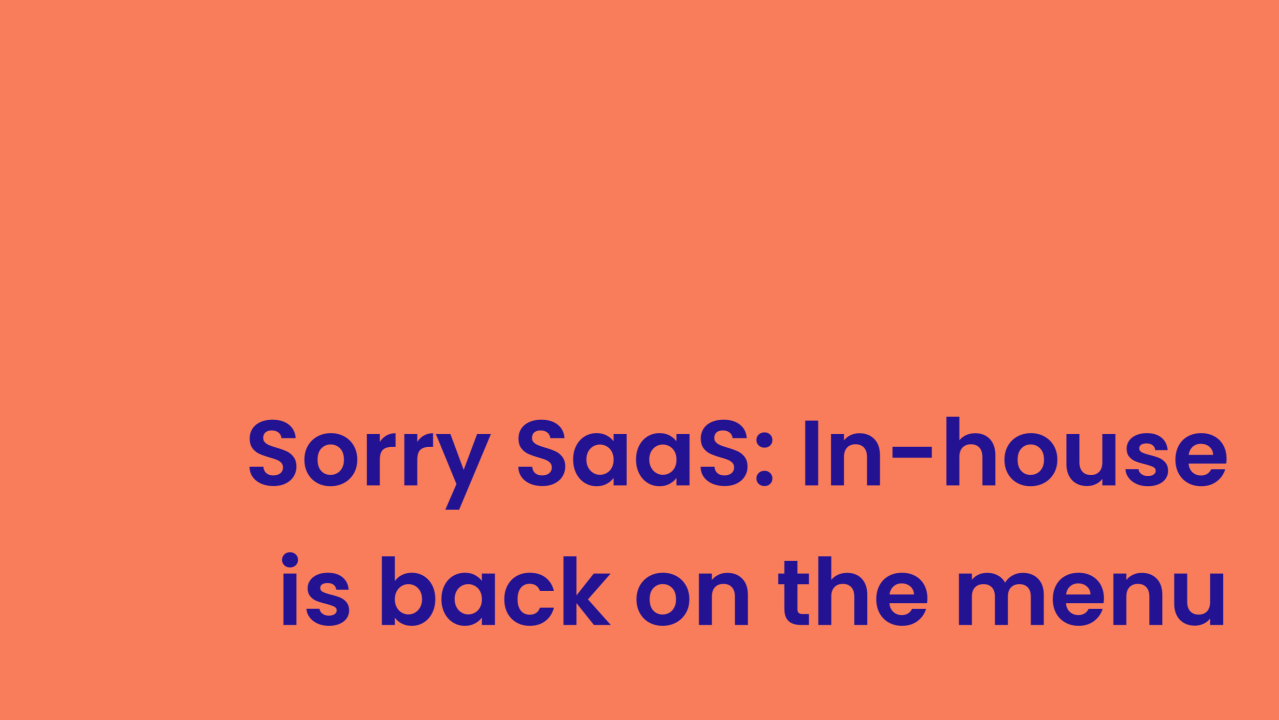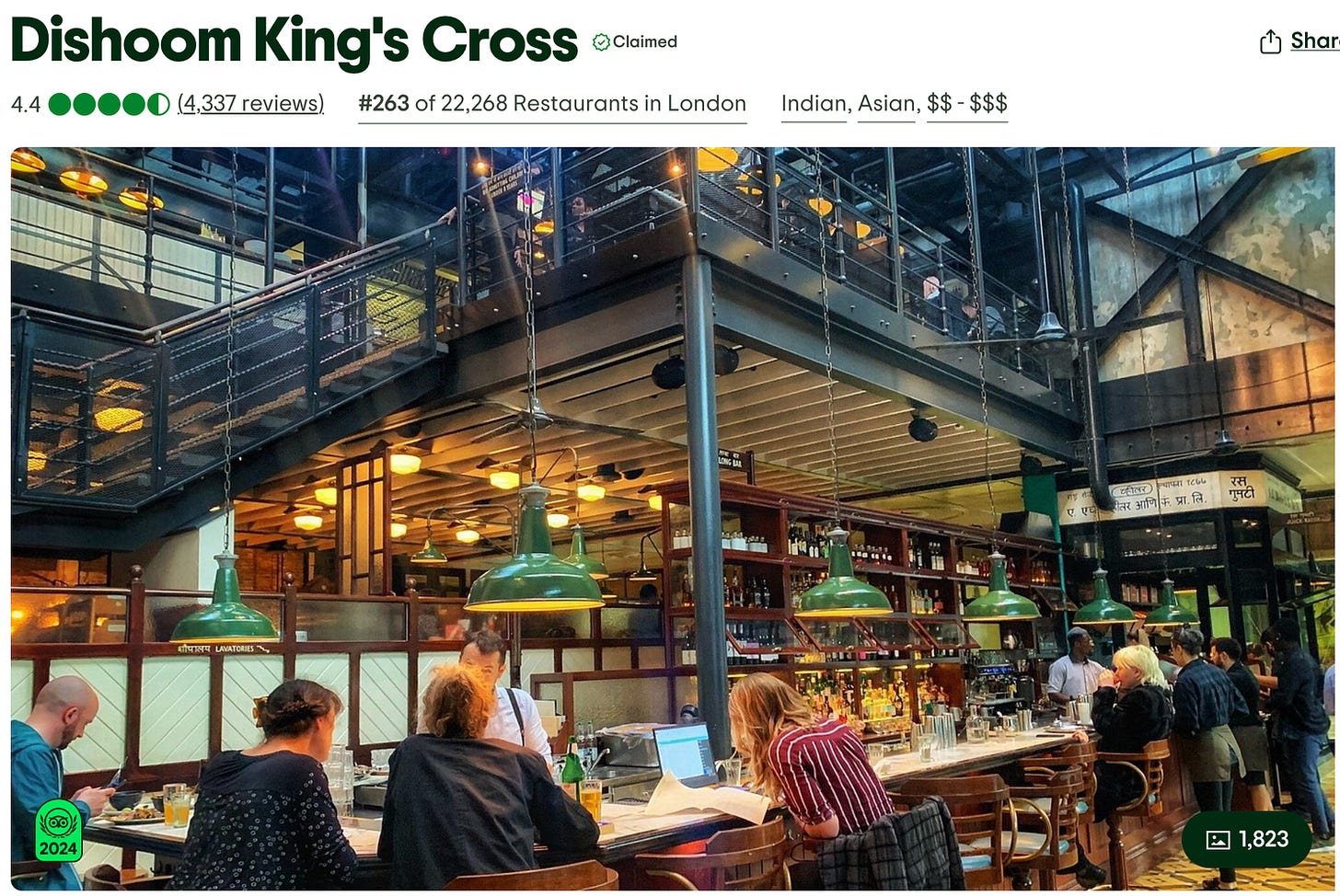Things are getting awkward for SaaS companies
Originally published on July 24th, 2025
Programming Note: I want to make sure if you click on this article, it’s going to be worth your time. When everyone and their puppy is a thought leader on LinkedIn with absurd takes like ‘Cursor was the fastest to $900M in Revenue! MAKE NO MISTAKE. THIS IS THE NEW NORMAL. If you’re not crushing it with just 10 engineers and agentic workflows, you’re not getting it yet.’ - clearly the barrier of entry for commentary and takes has lowered quite a bit.
My core thesis often gets challenged enough by new AI developments that I have to change at least 20% of the content every few days. Annoying? For sure. But it ultimately means you’re getting a perspective that’s been truly wrestled with and is as current as possible, not just a quick take.
“...MAKE NO MISTAKE. THIS IS THE NEW NORMAL...”- ugh 🙄
--awkward segue time--
Aaaaand speaking of barrier to entry, there was a pretty big shift in the 2010s for enterprise software. In 2011, the mantra was something like “These SaaS products are great for small companies, but make no mistake, large corporations with their complexities require heavily customized software from a proven reliable player with decades of experience.” This is when Oracle, SAP, and the like were the only game in town. Cut to 2016 where the story was “SaaS products will break down the monolith of heavily custom enterprise software that is expensive to maintain in-house or with a vendor.”
Pendulum shift
Now we’re slowly shifting back (albeit with more viscosity than many expected). The barrier to do customization until recently was quite high. As any Sr. Engineer if they were asked to build a custom integration for any poorly documented 3rd party API (which is a lot of them out there), they’d just have said “I’d rather just build our own thing in-house because integration will take just as long” and you’d either not do that thing at all or end up in a pretty sticky situation. Additionally, cron jobs used to be mostly for DevOps or Networking workflows. Event-driven architectures used to be for middle tier stuff that hardly saw the light of day. Then came self-hosted (often open source) Internal Developer Platforms. RedHat has a good overview for what these are. These things gained pretty quick adoption in just a handful of years with engineering staff. Now, we have something similar (and more glorified) with low-code agentic workflows, but this time, it’s not the engineers that are turning heads, but the Product and Non-Tech folks. These offerings aren’t perfect, but there is already some preliminary research around this. Therein lies the difference and there is lies the distinction for the future of SaaS companies.
The Quiet Revolution: Building In-House
While the rest of tech is going nuts over the AI/Agentic hype and the bigger consultancies are out there raking in money on transformation projects, something quieter is going on.
“The most effective teams will embrace the ‘boring’ work...”
It’s now easier to ask for something custom-built from an internal team. And it’s becoming less difficult (though still not trivial) to actually design and build that custom solution internally, with a higher chance of it being maintainable. The most effective teams will embrace the ‘boring’ work: improving internal workflows once deemed too complex to automate, or building robust, in-house ‘Zapier-like’ integrations between systems (especially for thorny areas like IAM). Why? Because the more you can take underlying infrastructure for granted, the more you can focus on higher-level, differentiating features. Here’s a very spicy take on this from the folks at HFS Research.
This was technically possible before, but the tradeoffs were far more brutal. Imagine explaining to your best product/engineering teams that two quarters would be spent overhauling an internal API instead of building new revenue-generating features! It’s not perfect yet, but these conversations are significantly less painful today.
An Awkward Future for SaaS
If you find merit in my hypothesis, then we have a pretty awkward future for SaaS companies over the next few years (especially, the ones who magically became AI-enabled in the last 10 minutes). For example, UiPath has historically been seen as a good automation pivot story. But recently, it’s been struggling to grow as a lot of what they offer has been easier to achieve in-house. For Desktop-based activities, it might still be around.
Another thing to keep in mind is that most SaaS companies that may have started as a tool doing just a few things really well are now trying to become systems of record for your company. This is because the ones with the willingness to pay are at the Enterprise level, so they come with the needs for as much of a monolithic solution as possible to simplify procurement.
But we have a problem here - there can only be a handful of systems-of-record for your company. More than that, the incentives are quite aligned for the SaaS company to do the same because of “stickiness” – a term which used to be a practical way to explain why a customer wouldn’t leave because of how much value you’re providing, but is now used to explain the degree of pain it’ll take to leave that solution.
So, let’s recap the emerging landscape. Large software providers are scrambling to prove their modernity to avoid losing customers to nimble in-house solutions. Smaller SaaS companies are struggling to retain customers as in-house alternatives become more viable. And new frameworks are making it significantly easier and cheaper to build custom solutions internally – tasks that were prohibitively expensive just months ago. Bottom line: This isn’t looking good for SaaS.
“In a world where every team is short-staffed, that kind of genuine time-saving isn’t just a nice-to-have; it’s a tangible ROI.”
The Time Premium
I’m not even going to pretend to offer a prediction here since things keep changing all the time. Instead, I want to spend this time to ask you, most likely a person (and hopefully a leader) in tech, to really be thoughtful about what your customers actually need. Today, the bar is so low to offer a ‘helpful’ product to consumers, and it’s not going to be easy to compete against free or in-house solutions. But it is absolutely possible.
Think about it like this: London’s Indian food scene is saturated, right? You can get a decent curry anywhere. But then there’s a place like Dishoom. They aren’t the cheapest, but they’re packed. Why? Because they offer an experience and a quality that makes you want to be there. It’s the atmosphere, the consistency, the little details that make you willing to wait in line.
The same logic applies to your product. The decision-makers in those sales rooms are the same people who likely still buy an iPhone even though a Samsung A-series phone will do everything except iMessage for way cheaper. They’re paying a premium not just for features, but for the seamless experience, the reduced friction, the time saved. In a world where every team is short-staffed, that kind of genuine time-saving isn’t just a nice-to-have; it’s a tangible ROI. It’s a strategic asset worth far more than just OpEx. They will gladly pay a premium for something that can truly save them and their team the most precious resource of all: time.
So, the real tradeoff decision for leaders? It’s shifting hard. It’s no longer just ‘do I deal with the hassles of an in-house solution today, or do I face an expensive, potentially escalating, renewal next cycle?’ That question used to be a weird one. Not anymore. Not today. It’s a fork in the road, plain and simple, and the path chosen will absolutely define who wins and who just... survives.



